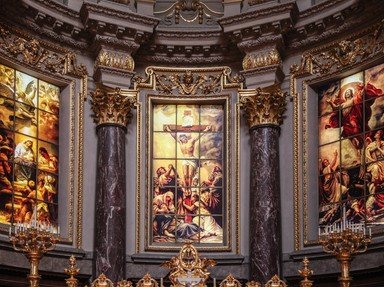Quiz Answer Key and Fun Facts
1. St. Angela of Foligno, who lived from c.1248 to 1309, was a Christian mystic and spiritual writer who became known by what title?
2. St. Antonio Primaldo and his companion martyrs were killed on the 14th August 1480 in which city of south-east Italy, after refusing to convert to Islam?
3. St. Peter Faber was a co-founder of which Catholic religious order that also counted Pope Francis as a member?
4. St. Marie of the Incarnation, a 17th century French Ursuline nun, is known for establishing a convent in which Canadian city?
5. St. Joseph Vaz was born in Goa (then part of Portuguese India) in 1651 and worked as a Catholic missionary in which modern day Asian island nation?
6. St. Junípero Serra was responsible for founding nine of the Spanish missions in California, which had the joint aims of spreading Catholicism amongst the native people and cementing Spanish control of the territory. In which century was Serra active?
7. St. Mariam Baouardy, a Discalced (or Barefoot) Carmelite nun, was noted for experiencing which religious phenomenon associated with the crucifixion?
8. In 2013, St. Laura of St. Catherine of Siena, a nun who was born Maria Laura Montoya Upegui, became the first person from which South American nation to be canonised?
9. One of the key factors in the ability of the Catholic Church to declare someone a saint is the attribution of at least two miracles to their intercession. Which location in India associated with St. Euphrasia Eluvathingal has since become a place of pilgrimage?
10. On 27th April 2014, Pope Francis canonised which two of his predecessors in the role of Bishop of Rome and head of the Roman Catholic Church?
Source: Author
Fifiona81
This quiz was reviewed by FunTrivia editor
agony before going online.
Any errors found in FunTrivia content are routinely corrected through our feedback system.
